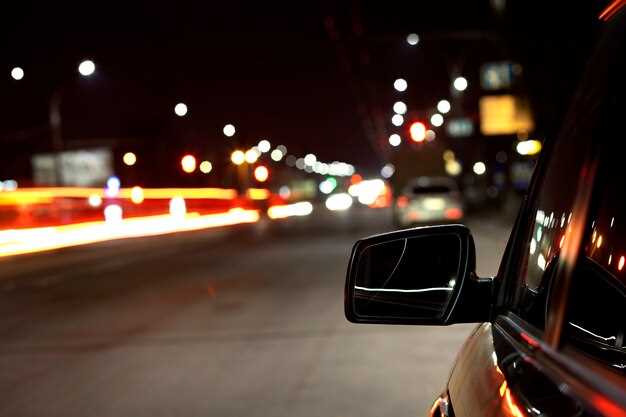
Driving at night presents unique challenges, chief among them being visibility. One of the most critical components affecting visibility is the condition of your vehicle’s headlights. Over time, headlight lenses can become clouded or yellowed due to exposure to UV rays, road debris, and environmental factors. This degradation can drastically reduce the amount of light that is emitted, compromising your ability to see and be seen while driving after dark.
Headlight restoration is not merely a cosmetic procedure; it is a vital maintenance task that enhances safety. By cleaning and restoring your headlights to their original clarity, you ensure that your vehicle provides optimal illumination on the road. This is particularly important as effective headlight performance can prevent accidents by improving your visibility of pedestrians, signage, and road hazards. Moreover, well-maintained headlights help other drivers see you more clearly, reducing the risk of collisions.
In summary, neglecting the condition of your headlights can negatively impact your safety and the safety of others on the road. Regular headlight restoration is an essential practice for every vehicle owner, making it a fundamental aspect of responsible driving. Don’t underestimate the power of clean, bright headlights; they are your first line of defense during night-time journeys.
Improving Nighttime Visibility Through Headlight Cleaning

Dirty or oxidized headlights can significantly impair your visibility during nighttime driving. Over time, headlights accumulate grime, dirt, and a yellowish coating which affects their brightness. Cleaning your headlights restores their clarity, allowing for maximum light output. This increased luminosity is essential in illuminating the road ahead, spotting potential hazards, and seeing pedestrians or animals that might otherwise be difficult to notice in the dark.
Effective headlight cleaning removes the layers of oxidation and contaminants, thereby enhancing the overall performance of your vehicle’s lighting system. This not only improves your immediate visibility but also contributes to safer driving experiences. The longer you postpone cleaning your headlights, the more difficult it becomes to restore their original clarity, which can lead to a dangerous situation during nighttime travels.
Regular maintenance and cleaning of headlights should be part of your vehicle care routine. Various DIY methods and commercial products are available that can help in rejuvenating your headlights, ensuring that they function effectively. Prioritizing headlight cleaning not only enhances visibility but also contributes to road safety for you and others.
Identifying Signs of Headlight Deterioration

Proper visibility is crucial for safe night driving, and deteriorating headlights can significantly impact this. Identifying the signs of headlight deterioration early can help ensure optimal driving conditions. Here are some common indications:
- Cloudiness or Haze: Over time, headlight lenses can develop a cloudy or hazy appearance due to oxidation. This reduces light output and affects visibility during nighttime driving.
- Yellowing: A yellow or amber tint on headlights can indicate the aging of the lens material. This discoloration can diminish the overall brightness of headlights.
- Cracks or Scratches: Physical damage to headlights, such as cracks or deep scratches, can scatter light and decrease visibility. Any visible damage should be evaluated promptly.
- Dimming Lights: If the brightness of your headlights seems to be diminished, it may be due to deterioration of the lens coating. Dimming lights signal a need for cleaning or restoration.
Regular maintenance, including the cleaning of headlight lenses, can help mitigate these issues before they become significant problems. If you notice any of these signs, consider restoring your headlights to ensure maximum visibility while driving at night.
Step-by-Step Guide to Restoring Your Headlights
Restoring your headlights is essential for improving visibility while driving at night. Over time, headlights can become cloudy or yellowed due to exposure to UV rays and environmental factors. Follow this step-by-step guide to bring clarity back to your headlight lenses.
First, gather the necessary materials: a headlight restoration kit, sandpaper (various grits: 400, 800, and 2000), masking tape, a spray bottle with water, and a microfiber cloth. Make sure to park your vehicle in a shaded area to prevent the materials from drying too quickly.
Next, clean the headlight surface using soap and water to remove dirt and grime. Dry it thoroughly with a microfiber cloth. Once dry, use masking tape to outline the headlight, protecting the surrounding paint from any accidental scratches during the restoration process.
Begin with the coarsest sandpaper (400 grit). Wet the sandpaper and the headlight lens with water. Sand the headlight in a horizontal motion, applying even pressure. This will help remove the outer layer of oxidation. Rinse the headlight with water frequently to remove debris and check your progress.
After completing the initial sanding, switch to the 800 grit sandpaper. Repeat the same wet sanding process, this time using vertical motions. This step will smooth out any scratches left by the 400 grit sandpaper. Rinse again to clean the lens.
Now, take the 2000 grit sandpaper and perform a final wet sanding in a circular motion. This will polish the lens and enhance clarity. Rinse thoroughly and dry the headlight with a microfiber cloth.
Finally, apply a headlight restoration solution from your kit, following the manufacturer’s instructions. This solution helps to protect the headlight from future oxidation and UV damage. Buff the headlight with a clean microfiber cloth for an added shine.
By following these steps, you will restore your headlights effectively, enhancing visibility during night driving and ensuring a safer driving experience.

